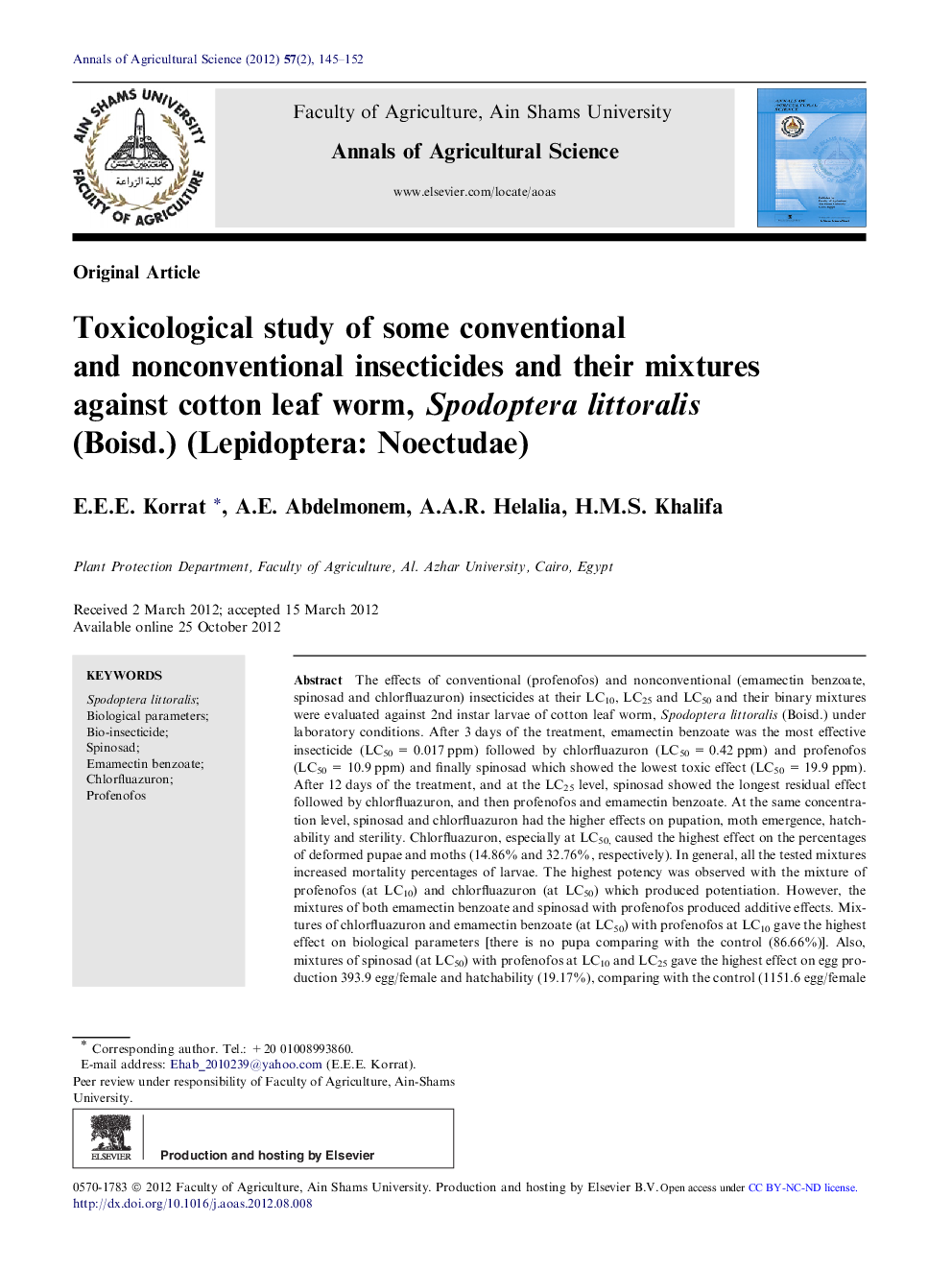| Article ID | Journal | Published Year | Pages | File Type |
|---|---|---|---|---|
| 4492937 | Annals of Agricultural Sciences | 2012 | 8 Pages |
The effects of conventional (profenofos) and nonconventional (emamectin benzoate, spinosad and chlorfluazuron) insecticides at their LC10, LC25 and LC50 and their binary mixtures were evaluated against 2nd instar larvae of cotton leaf worm, Spodoptera littoralis (Boisd.) under laboratory conditions. After 3 days of the treatment, emamectin benzoate was the most effective insecticide (LC50 = 0.017 ppm) followed by chlorfluazuron (LC50 = 0.42 ppm) and profenofos (LC50 = 10.9 ppm) and finally spinosad which showed the lowest toxic effect (LC50 = 19.9 ppm). After 12 days of the treatment, and at the LC25 level, spinosad showed the longest residual effect followed by chlorfluazuron, and then profenofos and emamectin benzoate. At the same concentration level, spinosad and chlorfluazuron had the higher effects on pupation, moth emergence, hatchability and sterility. Chlorfluazuron, especially at LC50, caused the highest effect on the percentages of deformed pupae and moths (14.86% and 32.76%, respectively). In general, all the tested mixtures increased mortality percentages of larvae. The highest potency was observed with the mixture of profenofos (at LC10) and chlorfluazuron (at LC50) which produced potentiation. However, the mixtures of both emamectin benzoate and spinosad with profenofos produced additive effects. Mixtures of chlorfluazuron and emamectin benzoate (at LC50) with profenofos at LC10 gave the highest effect on biological parameters [there is no pupa comparing with the control (86.66%)]. Also, mixtures of spinosad (at LC50) with profenofos at LC10 and LC25 gave the highest effect on egg production 393.9 egg/female and hatchability (19.17%), comparing with the control (1151.6 egg/female and 96.36%). The obtained results indicated that mixtures of conventional–nonconventional insecticides had the combined advantages of quick speed of killing and a high level of safety. Moreover, these mixtures probably affected by the existing resistance mechanism to conventional insecticides.
